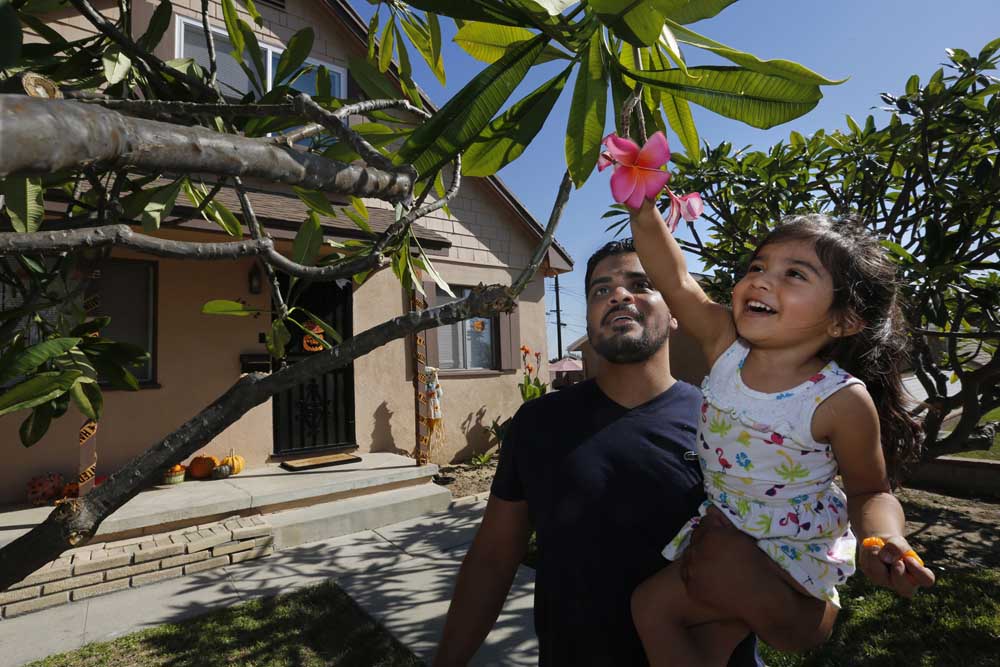Weighing risk, rewardsof nonbank lenders
Published 12:00 am Friday, December 4, 2015

- Don Bartletti / Los Angeles Times via Tribune News Service Abraham Cardona, 32, with his 3-year-old daughter, Dylan, outside their new home in La Mirada, California. The family opted to go with a loan from a nonbank lender to buy the home.
LOS ANGELES — PennyMac, AmeriHome Mortgage and Stearns Lending have several things in common.
All are among the nation’s largest mortgage lenders — and none are banks. They’re part of a growing class of alternative lenders that now extend more than 4 in 10 home loans.
All are headquartered in Southern California, the epicenter of the last decade’s subprime lending industry. And all are run by former executives of Countrywide Financial, the once-giant mortgage lender that made tens of billions of dollars in risky loans that contributed to the 2008 financial crisis.
This time, the executives say, will be different.
Unlike their subprime forebears, the firms maintain that they adhere to strict new lending standards to protect against mass defaults.
Still, some observers worry as housing markets heat up across the country and in Southern California, where prices are up by a third since 2012.
So-called nonbank lenders are again dominating a riskier corner of the housing market — this time, loans insured by the Federal Housing Administration, aimed at first-time and bad-credit buyers. Such lenders now control 64 percent of the market for FHA and similar Veterans Affairs loans, compared with 18 percent in 2010.
A Los Angeles Times analysis of federal loan data shows that FHA mortgages from nonbank lenders are seeing more delinquencies than similar loans from banks. Just 0.9 percent of FHA-insured loans issued by banks from October 2013 to September of this year were seriously delinquent — several months behind — compared 1.1 percent of nonbank loans. Put another way, nonbank FHA and VA loans are about 23 percent more likely to go bad than those issued by banks.
Consumer advocates worry that the new crop of mortgage companies, particularly those with ties to now-defunct subprime lenders, may again take advantage of borrowers.
“The idea that a lot of the folks who benefited during subprime are now back in action calls out for closer scrutiny,” said Kevin Stein, associate director of the California Reinvestment Coalition, a fair-lending advocacy group in San Francisco.
The surge in nonbank lending also has prompted alarm at Ginnie Mae, a government corporation that monitors FHA and VA lenders. Ginnie Mae’s president, Ted Tozer, has requested $5 million in additional federal funding to hire 33 additional regulators.
“These firms have grown so fast,” he said.
FHA borrowers can put down as little as 3.5 percent of the loan amount and have a credit score as low as 580, which could signal a past bankruptcy or debts sent to collection.
Even for borrowers with good credit, smaller down payments add risk. If home prices fall even a little, those borrowers can end up owing more than their homes are worth, which can encourage some to default.
But a small down payment was attractive for Abraham and Crystal Cardona. They both have high credit scores, approaching 800, but in September they chose an FHA loan from a nonbank lender when they bought a $500,000 home in La Mirada, about 15 miles southeast of downtown Los Angeles.
The minimal down payment of $17,000 left them enough savings to buy a few appliances and put a fence around their backyard pool.
“We were thinking about what our monthly payment was going to be, not where the loan was coming from,” said Abraham Cardona, 32.






